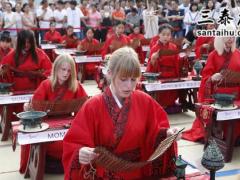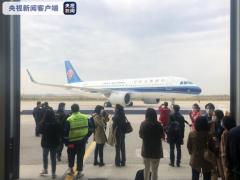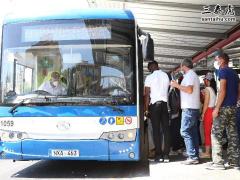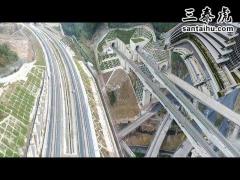在巴黎恐袭中唯有浴血而行奋战的医疗斗士 [美国媒体]
在那个巴黎恐怖袭击发生的周五,YonathanFreund正在他位于急诊室楼上的办公室里享受他繁忙工作中的10分钟茶歇,随后,一通电话打了进来,Freund接起了电话,电话中一位护士告诉他,SAMU,即法国紧急医疗服务中心,刚刚联系了这间医院,并通知他们就在刚才,全城多处发生了多起大规模枪击事件,状况堪忧:多达200人受伤,其中多人重伤。中心需要确定他们可以收诊多少名伤者。
‘I waswalking on blood’: The incredible work by doctors to help Paris victims
“我当时唯有浴血而行”——记在巴黎恐袭中奋战的医疗斗士
PARIS — On the Friday of the Paristerrorist attacks, Yonathan Freund was taking a 10-minute coffee break in hisoffice above the emergency room when a call came in.
在那个巴黎恐怖袭击发生的周五,YonathanFreund正在他位于急诊室楼上的办公室里享受他繁忙工作中的10分钟茶歇,随后,一通电话打了进来。
Freundpicked up the phone.
Freund接起了电话。
Thehospital had been contacted by SAMU, the Frenchemergency medical services, a nurse told him. Mass shootings hadoccurred at several sites across the city, and things didn’t look good: As manyas 200 people had been hurt, many of them gravely. How many patients couldFreund, an attending physician in the emergency room of Pitié-Salpêtrière, amajor Parisian teaching hospital, accommodate?
电话中一位护士告诉他,SAMU,即法国紧急医疗服务中心,刚刚联系了这间医院,并通知他们就在刚才,全城多处发生了多起大规模枪击事件,状况堪忧:多达200人受伤,其中多人重伤。中心需要确定他们可以收诊多少名伤者。
Freundblew the caller off.
Freund嗤之以鼻。
“Okay,Okay,” he remembered saying, a little impatiently. “Thank you very much, butI’ve got work to do. Goodbye.”
“好吧好吧,”他记得自己略显不耐烦地回应道,“感谢通知,但我还忙得很,再见。”
As Freundsuspected, the call was part of a drill — one of the exercises that have becomemore common over the past two years as the threat of terrorism has increased —and Freund was having a busy day. He hung up, finished his coffee and went backdownstairs to the ER, where patients with pressing problems such as chest painsand sprained ankles were awaiting his care.
按照Freund的猜想,这电话八成又是某种“演习”——随着这两年法国面对的恐怖威胁越发严重,这种演练也变得频繁起来,再加上Freund今天确实是忙得不可开交(所以他也就没把这电话当回事)。他挂了电话,喝完最后一点咖啡后就下楼回到了急诊室,那里,还有许多像胃痛或脚踝扭伤的急诊患者等着他的治疗。
Less than12 hours later, on a relatively quiet Friday evening in the ER, Freund’scolleague David Pariente received a similar call. The SAMU was reporting massshootings and suicide bombings at several sites. Only this time it was real.
不到12小时之后,在这个一如往常的平静的周五晚上,Freund的同事David也接到了一通和上午相似的电话,SAMU向他们通报了在巴黎多处的大规模枪击和自杀炸弹袭击事件。但不同的是,这次,是真的。
As thescale and severity of the attacks became clear, the director of the AssistancePublique-Hôpitaux de Paris (APHP), a network of public hospitals in Paris, tookan unprecedented step: He activated the city’s Plan Blanc, or White Plan,mobilizing all 40 hospitals to call in extra staff members and free upresources by emptying beds and canceling nonessential procedures. A furthergoal of the citywide coordination was to avoid over-staffing the initialresponse; some doctors and nurses needed to be fresh to treat patients thefollowing morning. Freund, 35, who lives near the site of the drive-by attacksin the streets, was among them.
当了解到这次袭击的规模和严重性后,巴黎公立医院联盟(APHP)采取了一个前所未有的措施:他激活了全城的医院联络网,要求全部40家医院加派人手,空出床位并取消所有无必要的安排。另外,他们还需要全城通力协作来避免在初期应对环节上的资源浪费:第二天一早的急救还需要大量的换班人员随时待命(他们必须为此留出足够人手)。35岁的Freund就住在离袭击地点不远的街道上,他也被安排在换班人员的名单中。
AtPitié-Salpêtrière, Pariente and his colleagues began putting Plan Blanc intoaction.
而在巴黎萨伯特慈善医院,Pariente和他的同事们已经开始着手实施这些措施。
He andthree other attending ER physicians sent some patients home and divided thefacility in two, setting aside one half to receive the bloodied and traumatizedyoung men and women who began to arrive: the first one in a car who hadsuperficial wounds on her scalp. The next via Uber, with a bullet lodged in hisabdomen. For the rest of the night, damaged bodies were delivered in ambulanceafter ambulance, sometimes four in each vehicle, leaving a red wake on thewhite linoleum floor that led into the building.
他和另外三位急救医师将一些手头上的患者送回家,并将整个医院一分为二,分别用于接收受伤流血且惊慌难安的男性和女性伤者。第一位患者是位女性,她坐在车里,头皮上有大面积表皮伤;第二位男性患者是自己叫车来的,一颗子弹击中了他的腹部。在当晚剩下的时间里,救护车一辆接着一辆送来源源不断的伤者,有时候一辆车里就有四个,所过之处在医院的白色地毯上留下了一道道红色的血迹。
“I waswalking on the blood,” said Pariente, 39. “I didn’t realize it. I was lookingahead of me all the time.”
“我就这样在血上走,”39岁的Pariente说道:“我当时都没注意到这个,只顾着眼前的事。”
The two phone calls — the first an exercise and the second alerting physicians toattacks that would leave 130 dead and more than 350 wounded —reflect the realities of a city that has been preparing its medical services toprovide a coordinated response to events that seemed at once unthinkable andinevitable.
两通电话——一通为了演习,一通向医生们通报了这场130死亡,350人受伤的袭击——从一个侧面上也反映出了一个城市在面对突发事件时的医疗救护能力。
“Everyoneknew. Everyone knew something would happen,” said Pariente, looking back. Therewas a heightened sense of risk, he said, with a bomb scare closing the nearbyGare de Lyon that very Friday afternoon.
“每个人都觉得有事要发生。”Pariente一边说,一边向后张望。他表示在袭击发生前的当天下午,随着里昂地铁站因炸弹恐吓而关闭后,这种危机感加重了。
“Thequestion,” Freund said, “was not if, but when.”
“问题不是是否(会发生袭击),而是什么时候发生。”
TheFrench response was highly centralized and drew on practices that differ fromU.S. emergency services. Using protocols adapted from the military, the SAMUsent physicians to the field, setting up triage centers close to the sites ofthe attacks, where they could treat patients on the spot before dispatchingthem to a hospital where specialists would be on hand to treat their particularinjuries.
法国在此次袭击中的对应展现出高度的统一协调性,与美国的医疗救助完全不同。借鉴了军事化的方法,SAMU得以将医生委派到前线,在袭击地点旁建立医疗中心。在那里医生们可以为伤者提供即时的医护救助,这后再将他们转送往医院的专科医生手中。
Thepatients wore colored signs around their necks:
同时,医师们也通过患者颈部的颜色标记对他们加以区分:
Redmarked the most critically wounded, who were admitted directly to resuscitationunits and often were moved swiftly into surgery.
红色标记代表最危重的外伤,需要立刻为患者架设复苏装置并立刻安排手术。
Yellowwas for those who needed immediate treatment in the ER.
带有黄色标记的患者会被即时送往急诊室。
Green wasfor patients who could be sent home with instructions to check in at an ERwithin 24 hours.
绿色标记则表示患者并无大碍,可以先行回家,等待24小时之内的后期诊治。
Parientedoesn’t remember seeing any green labels that night. Out of the 100 victims whowere assigned red labels, 28 were sent to Pitié-Salpêtrière’s resuscitationunit, while 27 went to the ER. The hospital, which usually has only oneoperating room open overnight, was able to staff 10 from late Friday eveninguntil 6 a.m. Saturday.
但Pariente并不记得当天晚上有看过任何带有绿色标记的患者。事实上,超过100名伤患都被标记为红色,28人送院架设复苏装置,27人进入急诊。这间医院平时在夜间只保留一间手术室,但在周五晚上,10间手术室全部开放,熬夜加班到周六早上6点。
Physiciansin Paris rarely treat gunshot wounds.“Not one a day. Not one a week,” Freund said. And the mass shootings that haveplagued U.S. campuses are unheard of. But French trauma surgeons have had agrowing awareness, heightened by January’s fatal attacks on the satiricalmagazine Charlie Hebdo in Paris, of the need for know-how.
在这之前,巴黎的医生甚少处理枪伤,“别说一天了,一周都不见得又一次。” Freund说道。而这种足以与美国校园枪击相比的大规模枪击事件更是从没发生过。但在这次袭击发生之前,法国的创伤外科医生们也已经有所准备,发生在今年一月的查理周刊枪击事件提醒了他们应对枪伤的重要性。
Pariente,who spent six years working in the SAMU, had some familiarity. The patient whoarrived by Uber bore in his abdomen an eerie sign of what had already happened— and of the kinds of injuries doctors would face hours later when the policefinally rescued the hostages held in the Bataclan concert venue.
Pariente已经在SAMU工作了6年,对此枪伤有一定心得。但当他看到被Uber送来的患者腹部的伤口后,医生们意识到发生的事情有多么可怕,并且再过几小时,当警方终于解救出巴塔克兰剧院中被困的人质之后,他们还将收治大量伤势棘手的病患。
Parientetook a look at the man’s CT scan, which showed the bullet in his abdomen. Itwas narrower and longer than any bullet he had seen before. The distinctiveshape, he would later learn, of the ammunition from an AK 47.
Pariente查看了伤患的CT扫描,图上显示一枚子弹嵌入了他的腹部。这个子弹比他以往看到的都窄都长。而这个特殊的形状。他后来知道,来自AK47。
Suchsomber realizations were matched by the surprising quiet of the ER.
这个发现让整个急诊室陷入了震惊的沉默中。
“Therewas no agitation,” Pariente said. Patients weren’t crying. They weren’t evenspeaking, simply answering the questions doctors asked about their medicalhistories.
“这里压抑极了。” Pariente回忆道。伤者们没有哭泣,除了简要回答医生们关于用药史的询问外,他们甚至都不说话。
WhenFreund came to work at 5 a.m. to relieve Pariente, following the bloodytrail into the ER, he saw his first gunshot wound ever — a fierce red burn linetracing the trajectory of a bullet from its tiny entry point in the skin on theback of a young man’s neck across to his right shoulder where its exit had lefta jagged hole. Marveling that the man had been spared certain death byone-fifth of an inch, Freund asked about his medical history.
第二天早上5点,当Freund来跟Pariente换班的时候,他沿着血迹走进急诊室,收治了他从业以来见过的最严重的枪伤:一条严重的烧伤痕迹记录了子弹是如何从一位年轻男性的后颈处射入,然后从右肩穿体而出的。子弹在他身上留下了一个血肉模糊的弹孔,只差0.2英寸就会夺取他的性命。Freund开口询问他的用药历史。
“I hadtesticular cancer 15 years ago,” he said, and had been cured. Not yet 40,he had already dodged two bullets.
“我在15年前得过睾丸癌。”他回答道,并且已经被治愈了。这个患者还不到40岁,已经两次虎口脱生。
Freundfound victims who looked at once familiar and as though they had come from awar zone.
尽管病患们看上去像是从战场上回来的,但Freund觉得在一瞬间发现了他们和自己竟有那么多相似之处。
“Theywere all our age,” he said, all younger than 40, covered in blood and grime andwith their clothes ripped, not only from bullet wounds but from their struggleto escape. Many of them had been enjoying an evening out in the bars andrestaurants of the bohemian quarter Freund and his friends like to frequent.“It’s our Brooklyn,” he said.
“他们都跟我差不多大。”他说,所有人都不超过40岁,满脸血垢,衣衫褴褛。这都是他们遭受枪击并奋力逃出时留下的。伤者中的许多人本应在酒吧和餐厅度过一个放松肆意的夜晚,Freund和他的朋友们也是那的常客。“那是我们的布鲁克林(意指是他们爱去放松的好地方)”他说。
About 8or 9 a.m., a young woman came in with her boyfriend to be treated forburns on her back. She explained very quietly what she thought had happened. Anassailant had pointed a gun at her, she said. When the police burst in, hedetonated his suicide vest, which exploded into her.
早上8、9点,一个女孩子在她男友的陪伴下来治疗背后的烧伤,她平静地叙述了当晚的所见所闻:一个歹徒拿枪指着他,当警察突入的时候,他引爆了自己的炸弹背心,爆炸波及了她。
Freundcouldn’t help but think as he cleaned out the burns that it might be the fleshof the terrorist seared against her skin.
Freund无言以对,唯有尽力帮她清理那些可能由于恐怖分子的碎肉溅射到她身上而造成的烫伤。
版权声明
我们致力于传递世界各地老百姓最真实、最直接、最详尽的对中国的看法
【版权与免责声明】如发现内容存在版权问题,烦请提供相关信息发邮件,
我们将及时沟通与处理。本站内容除非来源注明五毛网,否则均为网友转载,涉及言论、版权与本站无关。
本文仅代表作者观点,不代表本站立场。
本文来自网络,如有侵权及时联系本网站。
图文文章RECOMMEND
热门文章HOT NEWS
-
1
Why do most people who have a positive view of China have been to ...
- 2
- 3
- 4
- 5
- 6
- 7
- 8
- 9
- 10
推荐文章HOT NEWS
-
1
Why do most people who have a positive view of China have been to ...
- 2
- 3
- 4
- 5
- 6
- 7
- 8
- 9
- 10












